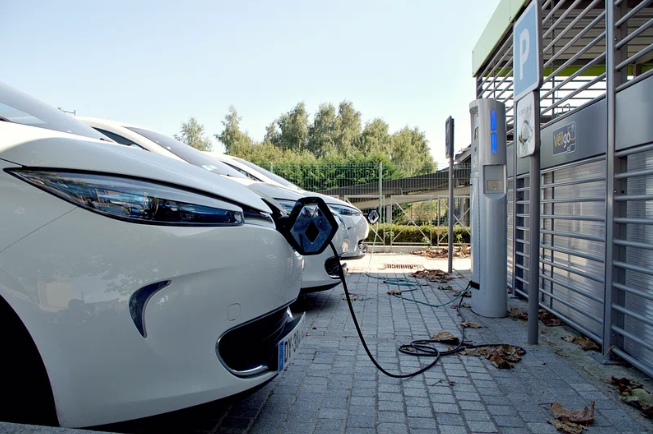Automobiles have taken a huge turn in history by introducing electric vehicles, as they are beginning to take over gas automobiles. Electric vehicles are redefining the future of transportation by offering a cleaner, quieter, and more sustainable alternative than traditional gasoline-powered vehicles. As the world suffers from climate change and rising fuel costs, the growing adoption of electric vehicles provides a promising solution.
One of the most significant advantages of electric vehicles is their environmental impact. They produce no tailpipe emissions, improving air quality and reducing air pollution’s adverse effects on human health. According to the U.S. Environmental Protection Agency (EPA), the total lifecycle emissions of an electric vehicle can be up to 89% lower than that of a gasoline-powered vehicle. Switching to electric vehicles can significantly reduce dependence on foreign oil and stabilize energy costs, such as electricity. Prices are generally more consistent than fluctuating oil prices.
From an economic point of view, powering an electric vehicle is about half the cost per mile compared to a gasoline-powered vehicle. Tax credits and government incentives, ranging from $3,700 to $7,500 in the U.S., further reduce the financial barrier to electric vehicle adoption. However, price remains a concern for many, as highlighted by Amy Clark, a gas car owner from Pennridge, who agreed that electric vehicle costs are a barrier to adoption for most people.
Charging stations for electric-powered vehicles have grown in the U.S. Today, most electric vehicle offerings range from 200 miles on a full charge, with newer models exceeding 400 miles. There are over 15,000 charging stations available across the U.S., in addition to the convenience of charging your car at home. Tesla owner John Wilcox shared his positive experience, stating he’s “been able to charge with no issue across all states traveled.” However, he also acknowledged that the last 20% of battery charging takes longer than expected, which is a common quirk of electric vehicle technology.
The adoption of electric vehicles has skyrocketed in countries such as Norway, China, and Canada, which all lead the charge in adopting electric vehicles. Norway is striving to phase out gasoline-powered vehicles by 2025. China, on the other hand, accounted for about 60% of global electric vehicles in 2023. Canada expects to convert 100% of car users to electric vehicles by 2035. In the U.S., sales of electric vehicles have skyrocketed, with over 200,000 sold in 2017 compared to only 18,000 in 2011. Local communities, such as the Pennridge area, are witnessing increased interest in electric-powered vehicles, reflecting the global interest.
While the benefits of these electric vehicles are undeniable, challenges remain. The cost is a main fracture, and limited accessibility is a recurring theme. Clark expressed skepticism about affordability, saying the main reason for her not purchasing one is “the price of the cars.” Even though Clark hasn’t purchased one yet, she might consider purchasing one in the future.
Transitioning to electric vehicles is a step toward a sustainable, healthy life. With continued innovation and support, electric vehicles have a chance to transform the way we drive and bring us closer to having less air pollution in the world.






